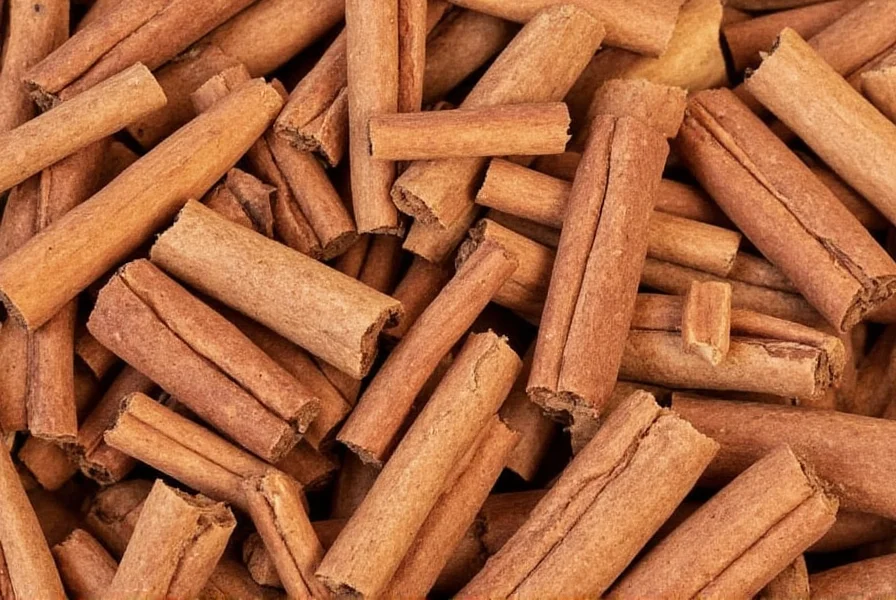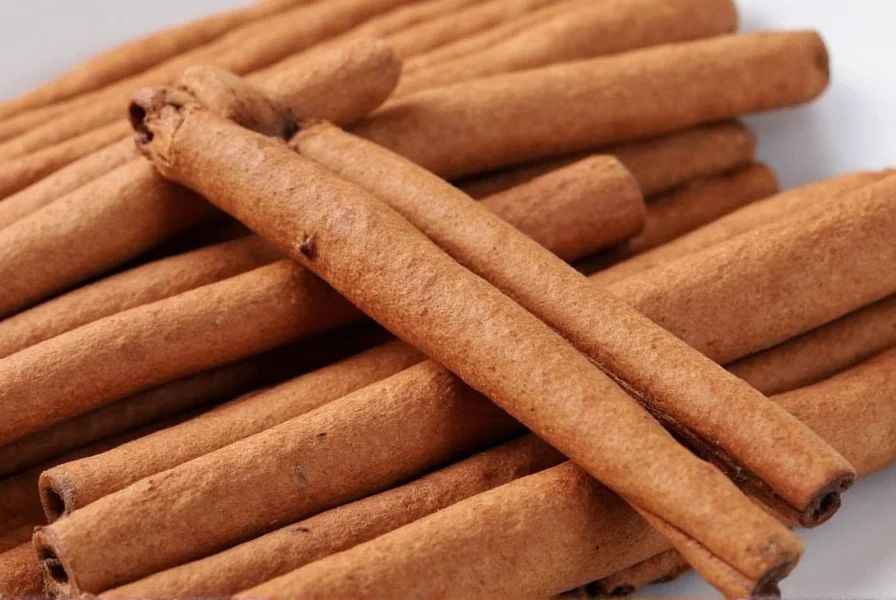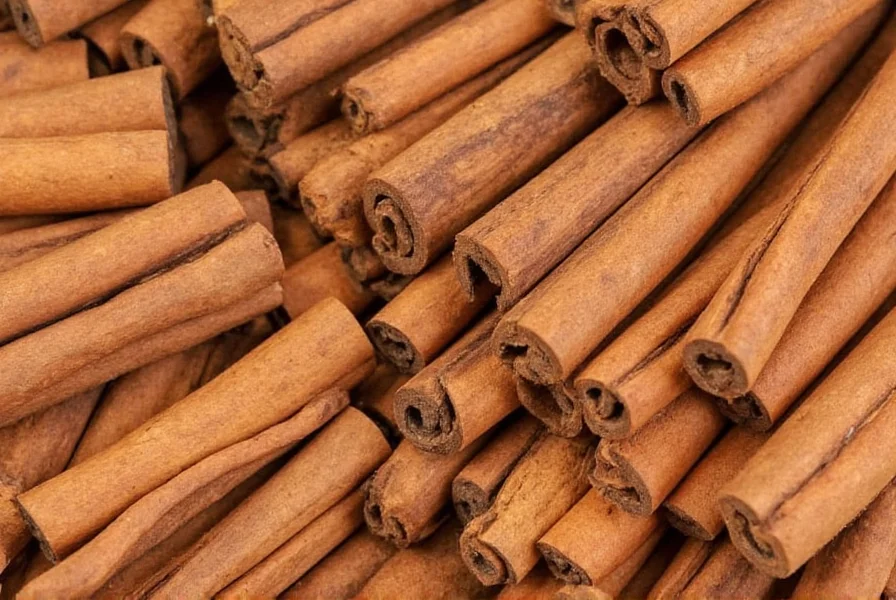Cinnamon sticks, those familiar curled pieces of aromatic bark found in kitchens worldwide, originate from specific evergreen trees in the Cinnamomum genus. Understanding where cinnamon sticks come from requires exploring both the botanical sources and geographical regions that produce this beloved spice.
The Cinnamon Tree: Botanical Origins
Cinnamon comes from several species within the Cinnamomum genus, part of the Lauraceae family. The two primary varieties that produce the cinnamon sticks you find in stores are:
- Cinnamomum verum (also called Cinnamomum zeylanicum) - Known as "true" or Ceylon cinnamon
- Cinnamomum cassia - Commonly referred to as Chinese cinnamon or cassia
These medium-sized evergreen trees thrive in tropical and subtropical climates, typically reaching 30-60 feet in height when mature. The distinctive cinnamon flavor and aroma come from the essential oils concentrated in the tree's inner bark.

Geographical Origins of Cinnamon Production
While cinnamon trees grow in various tropical regions worldwide, specific countries dominate production of each variety:
| Cinnamon Type | Primary Growing Regions | Global Market Share |
|---|---|---|
| Ceylon Cinnamon (C. verum) | Sri Lanka, Madagascar, Brazil, Caribbean islands | Approximately 10-15% of global production |
| Cassia Cinnamon (C. cassia) | Indonesia, China, Vietnam, India | Approximately 85-90% of global production |
Sri Lanka, formerly known as Ceylon, remains the world's largest producer of Ceylon cinnamon, accounting for about 80-90% of global Ceylon production. Indonesian Sumatra produces the majority of Cassia cinnamon, followed by China's Guangxi province and Vietnam's Quang Ngai region.
How Cinnamon Sticks Are Harvested and Processed
The journey from tree to spice rack involves a meticulous harvesting process that has changed little over centuries:
- Tree Selection: Harvesters select two-to-three-year-old cinnamon shoots that have been partially shaded to produce thinner, more flexible bark
- Bark Removal: Workers make parallel cuts along the length of the branch, then connect them with a circumferential cut to remove a section of outer bark
- Inner Bark Extraction
- Quill Formation: The inner bark naturally curls into a quill shape as it dries, with smaller pieces often inserted into larger ones to form the familiar multi-layered sticks
- Drying and Sorting: The quills dry for several days, then are sorted by quality, length, and thickness
This traditional harvesting method explains why cinnamon sticks have their distinctive curled shape - it's not manufactured but occurs naturally during the drying process. Understanding how cinnamon sticks are harvested reveals why premium Ceylon cinnamon consists of multiple delicate layers, while Cassia typically forms a single thick layer.
Key Differences Between Ceylon and Cassia Cinnamon
When exploring where do cinnamon sticks originate from, it's crucial to understand the two main varieties:
- Ceylon Cinnamon (C. verum): Lighter in color, multiple thin layers, delicate sweet flavor, lower coumarin content, considered "true" cinnamon
- Cassia Cinnamon (C. cassia): Darker reddish-brown, single thick layer, stronger more pungent flavor, higher coumarin content, more common in supermarkets
The difference in structure directly relates to what tree do cinnamon sticks come from - Ceylon trees produce thinner, more fragile bark that forms multiple concentric layers, while Cassia bark is thicker and forms a single hard layer. This structural difference affects both appearance and culinary uses.

Historical Context of Cinnamon Trade
Cinnamon has been prized for thousands of years, with records of its use dating back to ancient Egypt around 2000 BCE. For centuries, the exact where do cinnamon sticks come from origin was shrouded in mystery as Arab traders controlled the spice routes and spread elaborate stories to protect their monopoly.
It wasn't until the 16th century when Portuguese explorers discovered cinnamon growing wild in Sri Lanka that the true source became widely known. Later, Dutch and British colonizers established plantations, transforming cinnamon from a rare luxury into a more accessible global commodity.
Modern Cinnamon Production and Sustainability
Today, cinnamon production faces challenges including climate change impacts on traditional growing regions and concerns about sustainable harvesting practices. Many producers are implementing certification programs to ensure:
- Responsible forest management
- Fair labor practices for harvesters
- Preservation of biodiversity in cinnamon-growing regions
- Traditional knowledge preservation
When purchasing cinnamon sticks, consumers increasingly seek information about sri lanka cinnamon production methods and ethical sourcing, reflecting growing awareness about the origins of this everyday spice.
How to Identify Quality Cinnamon Sticks
Understanding where do cinnamon sticks come from helps consumers identify quality products:
- Check the layers: Multiple thin layers indicate Ceylon cinnamon; a single thick layer suggests Cassia
- Examine the color: Ceylon is light tan to medium brown; Cassia is darker reddish-brown
- Smell the aroma: Ceylon has a delicate, sweet fragrance; Cassia is stronger and more pungent
- Look for origin labeling: Reputable sellers specify whether it's Sri Lankan (Ceylon) or Indonesian/Chinese (Cassia)
Knowing how to distinguish between varieties helps consumers make informed choices based on flavor preferences and health considerations, particularly regarding coumarin content which varies significantly between Ceylon and Cassia varieties.
Frequently Asked Questions
Are cinnamon sticks and cinnamon bark the same thing?
Yes, cinnamon sticks are simply the dried inner bark of cinnamon trees rolled into quills. The terms "cinnamon sticks," "cinnamon quills," and "cinnamon bark" all refer to the same product - the processed inner bark of Cinnamomum trees.
Which country produces the best quality cinnamon sticks?
Sri Lanka is widely regarded as producing the highest quality Ceylon cinnamon sticks, often called "true cinnamon." The unique climate and soil conditions of Sri Lanka's low-country wet zone create ideal growing conditions that produce cinnamon with superior flavor, aroma, and delicate layered structure compared to other regions.
How long does it take for a cinnamon tree to produce harvestable bark?
Cinnamon trees typically require 2-3 years of growth before their bark can be harvested. Farmers often prune the trees to encourage new shoots, as the youngest branches produce the thinnest, most flexible bark ideal for high-quality cinnamon sticks. After the initial harvest, trees can be harvested every 2-3 years for up to 30 years.
Why are some cinnamon sticks more expensive than others?
Price differences primarily reflect the cinnamon variety (Ceylon is typically more expensive than Cassia), quality grade, harvesting methods, and origin. Ceylon cinnamon commands higher prices due to its more labor-intensive harvesting process, delicate flavor profile, lower coumarin content, and limited production primarily in Sri Lanka. Higher quality grades with longer, more intact quills also fetch premium prices.
Can you grow your own cinnamon tree to harvest sticks?
Yes, you can grow cinnamon trees in tropical or subtropical climates (USDA zones 9-11), or as container plants in cooler regions. However, producing harvestable cinnamon sticks requires patience - trees need 2-3 years to mature before bark harvesting. Home growers typically won't achieve the same quality as commercial producers due to differences in soil conditions, climate control, and harvesting expertise required for proper quill formation.











 浙公网安备
33010002000092号
浙公网安备
33010002000092号 浙B2-20120091-4
浙B2-20120091-4